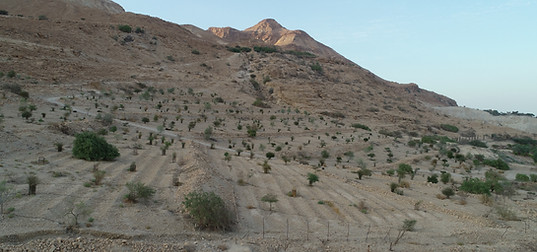
Research Programs
SAL affiliates and graduate students are engaged in multiple research programs exploring the spatial and environmental contexts, constraints and dynamics associated with human behavioral patterns and social processes. These programs commonly involve systematic, high-resolution survey projects analyzed using computational tools and spatial modeling, in addition to the study of material, spatial and environmental facets of diverse cultural landscapes (caves, cliffs, road systems, agircultural landscapes, and arid regions).
Settlement Dynamics in Early Bronze Age Galilee and Early Levantine Urbanization
This ISF-funded, five-year research program is designed to readdress current hypotheses regarding Early Bronze Age (EBA) urbanization processes in the southern Levant (ca. 3800-2500 BCE) through the study of settlement complexity in modern-day northern Israel, based on two complementary investigations: delineating the structural and socio-economic development of a recently-identified mega-site at Qedesh in the Upper Galilee, probably the largest 'urbanized' EBA site in the southern Levant; and locational modeling of EBA settlement patterns based on new surveys at key sites and refined published datasets at a multi-regional level that includes the Galilean Coastal Plain, Galilean Highland, and northern Jordan Valley. The characterization of changes in interregional settlement systems, site sizes, settlement locational preferences, and subsistence strategies throughout the EBA, together with in-depth investigation of the internal development of an interregional center, balance between different local and regional trajectories which formed the basis for previous assessments of EBA urbanization processes, while obtaining a comprehensive and integrated model of lowland-upland settlement and economic dynamics in northern Canaan.

Human Activity Patterns in Complex Caves in Late Levantine Prehistory
The archaeology of natural caves around the globe is usually associated with the study of hunter-gatherer societies. Nevertheless, caves continued to form an integral part of human landscapes well after the Neolithic Revolution. With the advent of complex, sedentary societies, human activity patterns in the subterranean sphere changed dramatically. While large, composite karstic caves were apparently not used for permanent habitation, they offered potential localities for diverse off-settlement activities, including resource procurement, burial, ritual, and refuge. The major contribution of the study of natural caves under the realm of early complex societies lays in the opportunity to identify and analyze behavioral patterns which cannot be easily recognized in settlement sites. The present project, spearheaded by Micka Ullman, focuses on the analysis of human activity patterns in complex caves in the southern Levant dated between the 7th and 3rd millennia BCE. The program includes systematic surveys in dozens of caves in all upland regions in Cisjordan, and a comparative analysis of the environmental, spatial, material, chronological, and cognitive aspects of the archaeological record of composite Levantine caves.

Holocene Human-Environment Interactions in the Judean Desert
Our current research program in the Judean Desert, which builds on earlier programs (e.g., Porat 2006; Davidovich 2008, 2014) is centered around the DEADSEA-ECO, an ERC-funded project headed by Dr. Nimrod Marom (ERC-Stg grant no. 802752). The study focuses on changes in the regional ecosystem of the Judean Desert in relation to periods of prosperity and decline in human activity in this region, with En Gedi Oasis as its center. This study entails the collection and analysis of zoological and bioarchaeological data from a 40+ caves in the southern Judean Desert, dating and locational modeling of leopard traps, and detailed archaeological and environmental studies (including surveys and small-scale excavations) in main loci of human activity in En Gedi.
